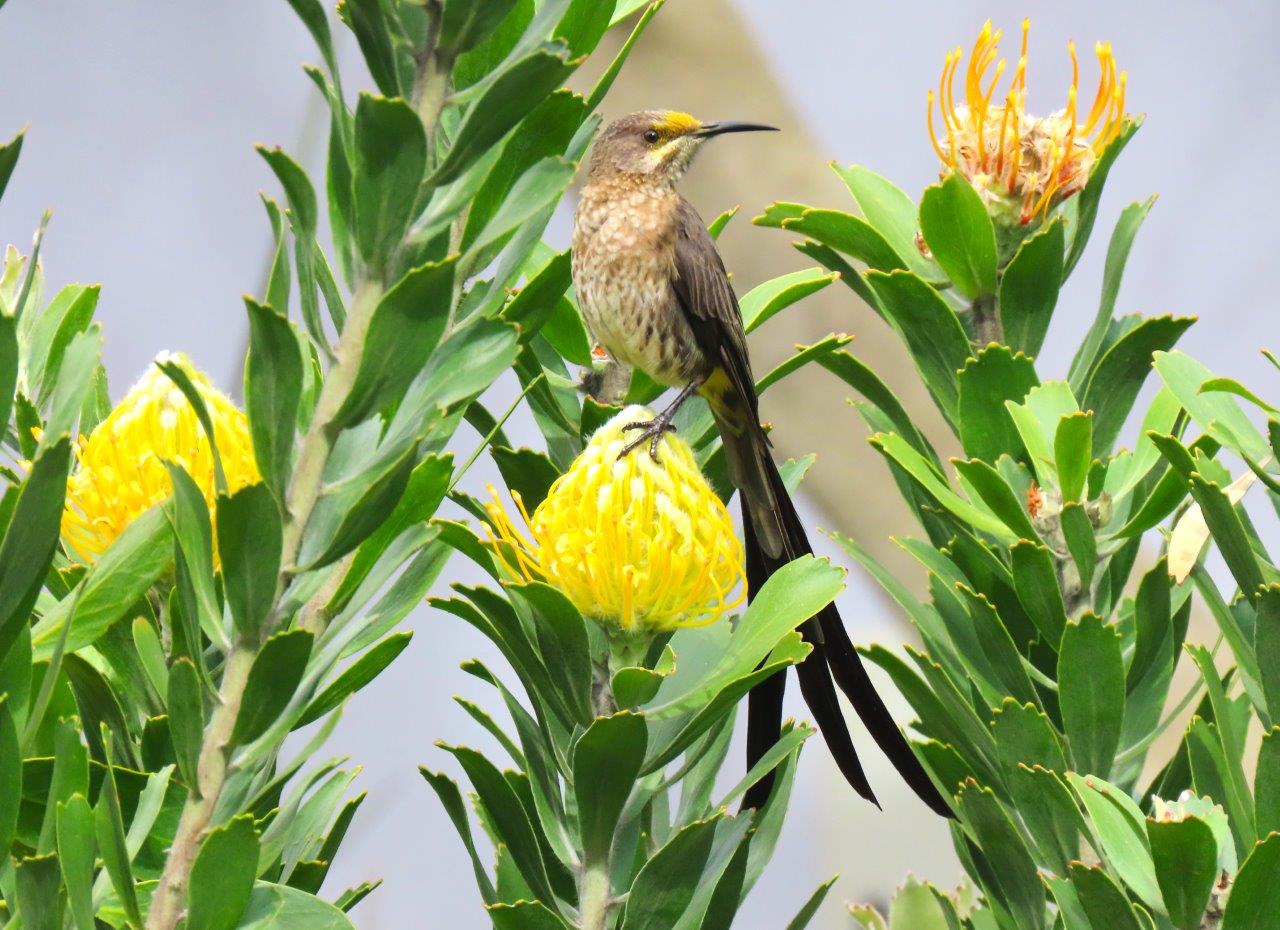...as I have been waiting for him for a few weeks now.

Now how's that for a tail? He is a Cape Sugar Bird (Promerops cafer).
The Cape sugarbird is a grey-brown bird that is easily recognisable by a spot of yellow under its tail and the very long tail feathers present in males. The male is 34–44 cm long, and the shorter-tailed, shorter-billed, and paler breasted female 25–29 cm long. Another characteristic of the Cape sugarbird is the sound it makes when it flies. The main flight feathers are arranged in such a way that when the bird beats its wings, a frrt-frrt sound is made with the intention of attracting females.
He chose to live in this area where the Malachite sunbird is king, and I will show you below how I got him as a youngster.
There he was, as a youngster, forever on guard and peeping around.
Simply because he knows that this is the Malachite's spot. I have also found another Malachite nest with the female on the eggs, and it will not be long before the eggs hatch. Then I hope to get the baby on camera. The Malachite does not hesitate to dive bomb the Cape Sugarbird. But once the Malachite baby is born and it flies, then they will leave the area and it will all be open to the Cape Sugarbird.
Look how he dives down into the pincushion bush when the malachite flies over above him.
He constantly keeps a lookout for the malachite's attacks.
A closeup here of the picture below this one.
Now his job will be to find a female, but thankfully there is still a lot of time left. So, he can sit and dream about a family.
The Cape sugarbird is a specialist nectar feeder when it comes to feeding off Proteaceae. Its long, sharp beak is used to reach the nectar of a variety of species of protea with its long brush-tipped tongue. The staple diet of this sugarbird is nectar; however, it will also eat spiders and insects. The characteristic strong winds in the Cape may make feeding off protea heads difficult, but the Cape sugarbird has adapted to this with the development of sharp claws.
This is not the first time that I post the Cape Sugarbird, as I got him several times before at other places. I even said somewhere that since the protea bushes at the nature reserve was destroyed by fire, the Cape Sugarbirds had to find alternative protea pincushions to feed on. Thankfully, this one selected this area on one of our favorite wine farms. Beautiful birds with their very long tails.
I hope you enjoyed the pictures and the story.
Photos by Zac Smith-All Rights Reserved.
Camera: Canon PowershotSX70HS Bridge camera.
Thank you kindly for supporting this post.